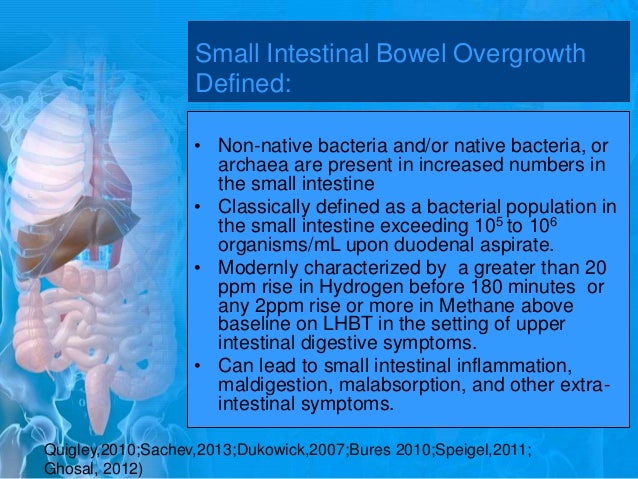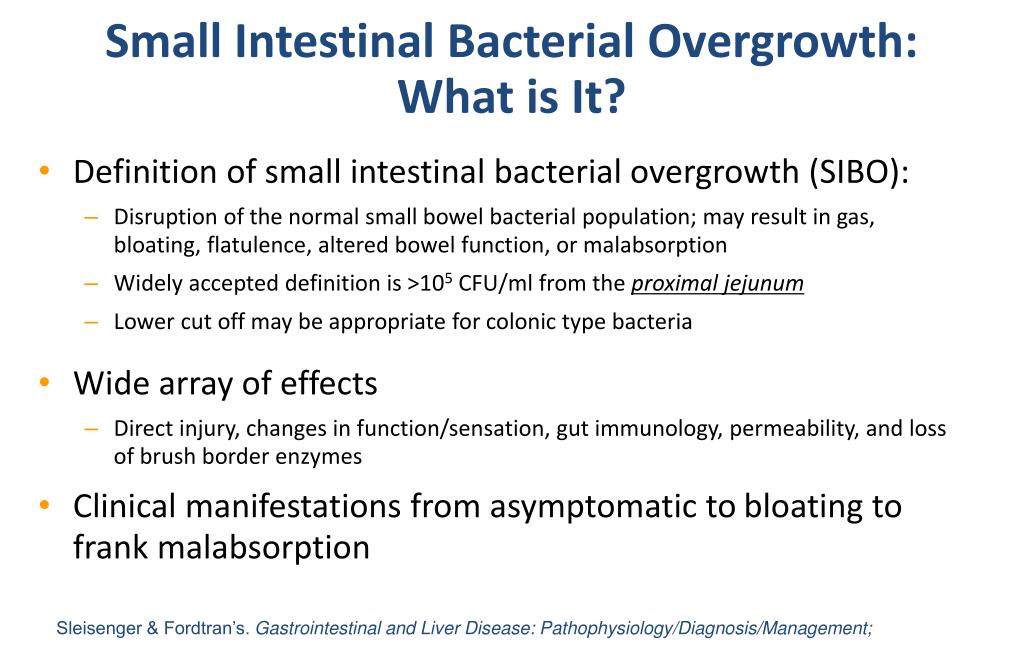



The presence of these excess organisms, resulting in multiple intestinal symptoms, is mandatory. Small intestinal bacterial overgrowth (SIBO) is defined as the presence of excess colonic bacteria in the small intestine. Discuss interprofessional team strategies for improving care coordination and communication to improve outcomes in patients who present with small intestinal bacterial overgrowth.Outline the management options available for small intestinal bacterial overgrowth.Review the appropriate steps to evaluate a patient with suspected small intestinal bacterial overgrowth (SIBO).Identify the risk factors and etiology of small intestinal bacterial overgrowth.This activity reviews the evaluation and management of SIBO and explains the role of the interprofessional team in improving care for patients with this condition. When these protective mechanisms against excessive bacterial growth fail, small intestinal bacterial overgrowth (SIBO) can manifest. Gastric acid secretion and intestinal motility limit the overgrowth of bacteria in the small intestine. In contrast to the large intestine, the concentration of the bacteria in the small intestine rarely exceeds 1000 organisms/mL.


 0 kommentar(er)
0 kommentar(er)
